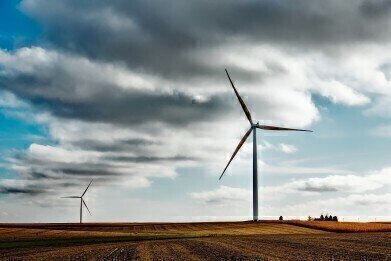Fuel for Thought
Scotland Have Quietly Achieved 50% Electricity Consumption from Renewable Sources. But How?
Apr 13 2015
During the 2014 Scottish Independence referendum, the Yes campaign put the majority of their eggs in the oil basket. They championed the countries North Sea treasure trove as a source of potential income for an independent state – but the realty of the situation is that renewable energy could be what powers the economy in years to come. Beating their target by a whole year, new figures show that almost half (49.5%) of the country’s energy needs were met by renewable sources in 2014. Will such promising numbers, it’s no wonder that Scotland is blocking fracking.
Taking advantage of rough seas, strong tides, high winds and, yes, even the sun, the perpetually wintery country smashed targets and met almost a third of overall demand for electricity in 2014. Joss Blamire, Senior Policy Manager for Scottish Renewables said: “These figures show how valuable the renewables sector is to Scotland, with wind and rain generating almost half of our electricity needs.
With records broken for all our major renewable energy technologies – hydro, solar pv, biomass and wind – 2014 was the best year ever for green energy in Scotland.” Not content to sit on his haunches, Blamire commented that there is still much to be done in order to meet targets for heating, which currently makes up over half the energy used in Scotland. There are also further targets to reach, and Scotland plans to source 100% of its energy from renewable sources by 2020.
How did Scotland achieve 50% of energy from renewable sources?
The biggest source by far is onshore and offshore wind farms, which increased output by 7.9% and 16.1% on last year, respectively. There are eight onshore wind farms, one offshore wind farm, and a further two under construction or proposed.
The Energy Saving Trust also played a key role in getting people interested in renewable energy by offering incentives and grants for homeowners to install solar panels and energy efficient boilers. This budget has now been allocated entirely and the scheme has closed, which only goes to show the popularity with the Scottish people.
The wider impact of renewable energy
Scotland is not only investing in sustainable energy, but also creating a sustainable economy. Renewable energy ventures are creating jobs in some of the more remote regions – Lanarkshire’s Black Law Wind Farm employs seven people on site and created 200 jobs during construction.
Commenting on the recent figures, SNP MSP Dennis Robertson said: “Scotland’s renewable energy industry has made great strides in recent years, creating jobs and bringing investment to communities across Scotland. As attention now turns to meeting the target of generating the equivalent of 100 per cent of electricity consumption from renewables by 2020, it is long past time for Westminster to play its full part in supporting Scotland’s renewables sector.”
Digital Edition
PIN 25.2 Apr/May
May 2024
Safety - Carbon monoxide toxic and flammable gas detection Analytical Instrumentation - Density: A fundamental parameter at critical stages within the petroleum sector - Advancements and...
View all digital editions
Events
May 13 2024 New Orleans, LA, USA
May 14 2024 Tashkent, Uzbekistan
May 14 2024 Oklahoma City, OK, USA
May 15 2024 Lund, Sweden
May 15 2024 Copenhagen, Denmark


















